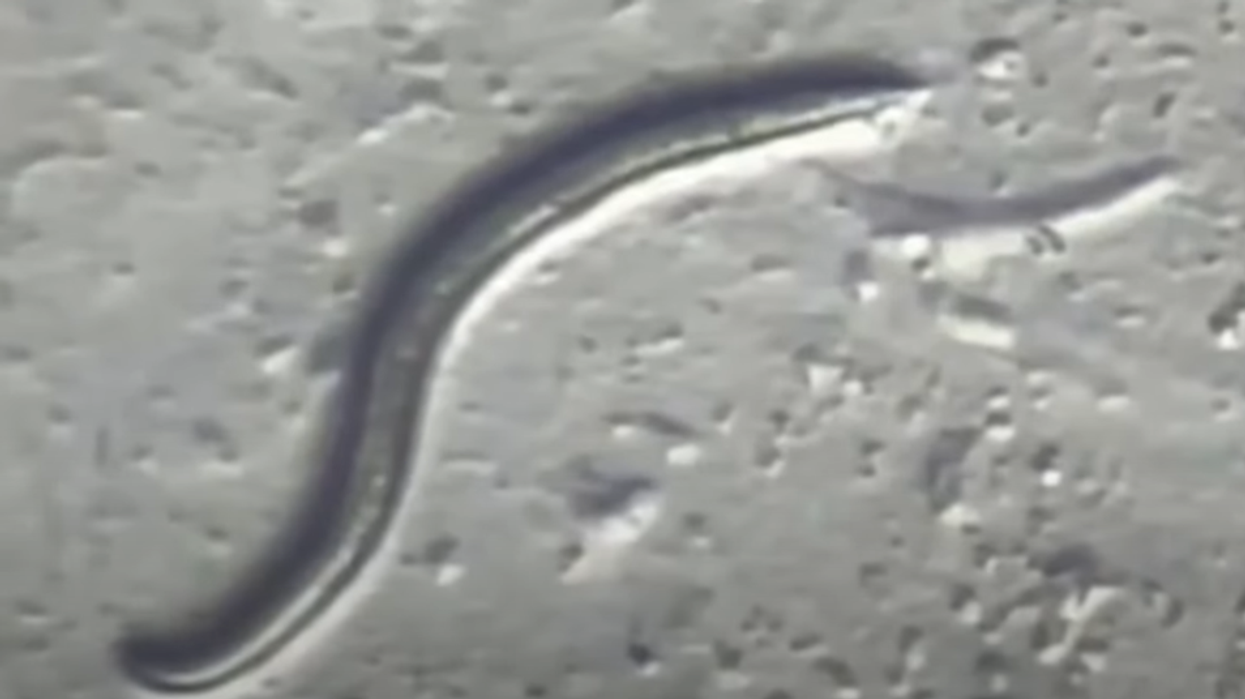
YouTube Global News Video Screenshot

Prehistoric worms that had been preserved in the frozen Siberian permafrost for 46,000 years were brought back to life by scientists.
A microscopic roundworm – a previously unknown species of nematode – was extracted from permafrost near the Kolyma River in the northeastern Arctic. The nematodes were reanimated after being extracted from the frozen permafrost in Siberia, according to a study published Thursday in the journal PLOS Genetics.
"Survival in extreme environments for prolonged periods is a challenge that only a few organisms are capable of," researchers wrote in the study. "Here, we show that a soil nematode Panagrolaimus kolymaensis suspended life for 46,000 years in the Siberian permafrost."
According to Live Science, "The newly described nematode entered cryptobiosis in the late Pleistocene (2.6 million to 11,700 years ago), an epoch that included that last ice age."
The undescribed species were named Panagrolaimus kolymaensis by scientists. Making the reanimation of the ancient roundworm after 46,000 years more extraordinary is that the typical lifespan of Panagrolaimus kolymaensis is just one to two months.
The scientists determined the age of the roundworms by using radiocarbon dating of the plant material found in the permafrost.
Scientists said the nematodes were able to survive 46,000 years by entering a state called cryptobiosis – in which the animals reduce their metabolism to extremely low levels to withstand extreme conditions.
The authors of the study wrote, "Our findings indicate that by adapting to survive [in a] cryptobiotic state for short time frames in environments like permafrost, some nematode species gained the potential for individual worms to remain in the state for geological timeframes."
The study noted that the nematodes were located in a fossil burrow left by arctic gophers of the genus Citellus, about 130 feet deep.
Scientists believe the cells of the prehistoric roundworms were protected from dehydration by a sugar named trehalose.
Philipp Schiffer, a co-author of the study and evolutionary biologist at the University of Cologne in Germany, told the Washington Post, "We can say that they are alive, because they move, they eat bacteria on the culture plates, and they reproduce."
Smithsonian Magazine reported, "The researchers learned more about the worms by spawning more than 100 generations of them in the lab. Like other species of Panagrolaimus, the newly discovered one reproduces asexually through parthenogenesis, and it has three full sets of chromosomes, instead of the usual two."
Thomas Boothby, a molecular biologist at the University of Wyoming who was not part of the study, told the Wall Street Journal, "To have a complex and multicellular organism that can shut down and go into this state of suspended animation — for all extents and purposes appear dead... that’s mind-boggling."
Like Blaze News? Bypass the censors, sign up for our newsletters, and get stories like this direct to your inbox. Sign up here!
46,000-year-old worms squirm back to life after thawing from Siberian permafrostwww.youtube.com